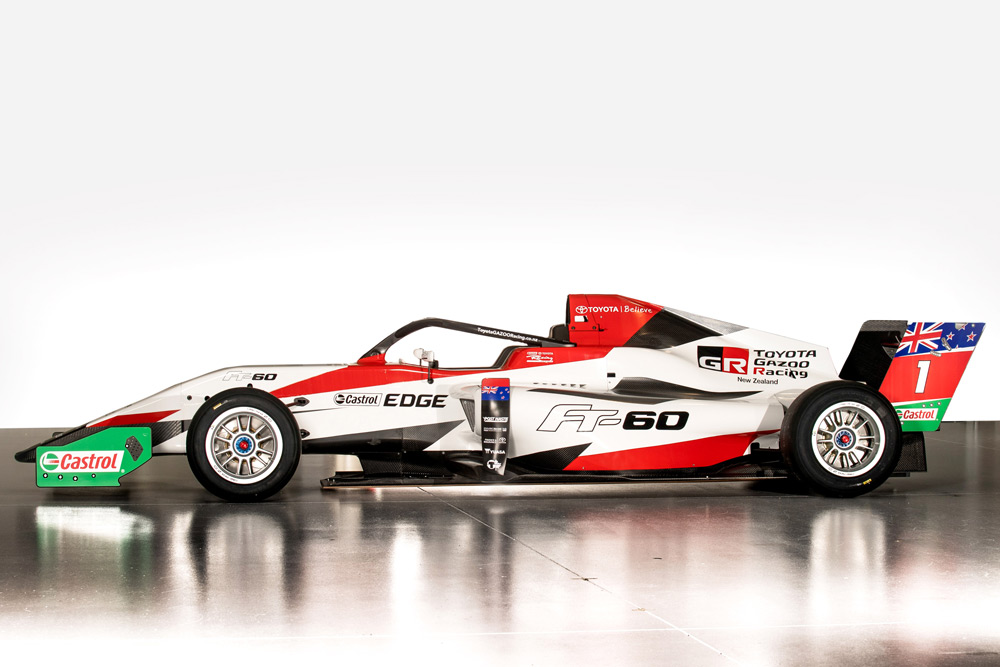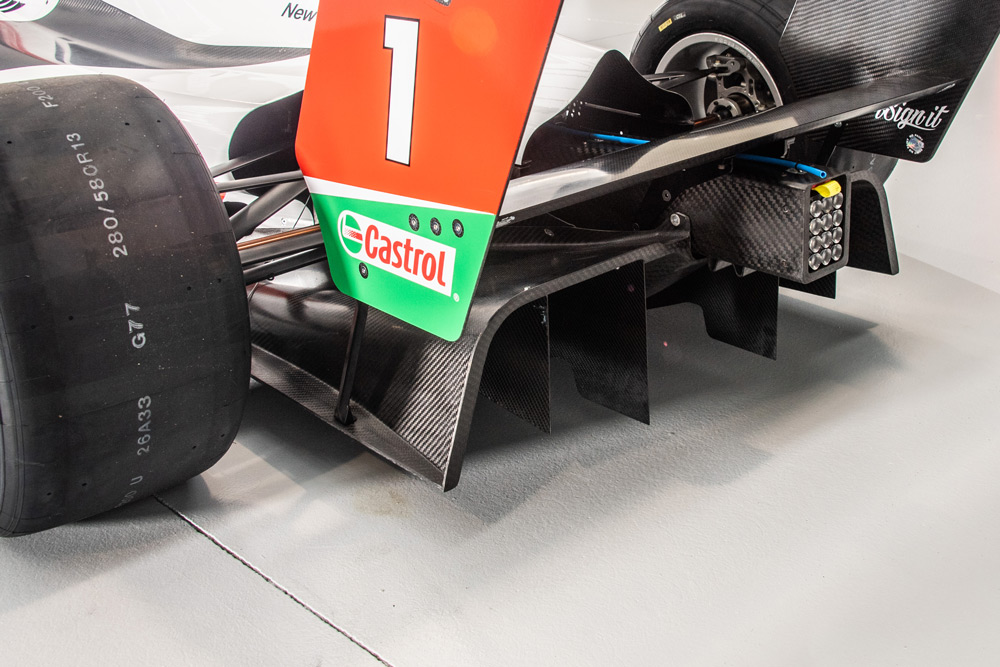Last week Toyota GAZOO Racing New Zealand launched their fabulous new single seater, the FT60. Twenty of these cars are expected to take to the grid at the opening round of the 2020 Castrol Toyota Racing Series in January.
Talkmotorsport sat down with series manager Nicolas Caillol (pictured above on the left talking to Liam Lawson and Esteban Muth) to find out how this new car came about. How and why did it evolve?
“We are always in discussions with the FIA,” said Caillol. “So the first thing we needed to get in place was the Super Licence Points. That was important to get them in the scheme (for the 2019 series).
“They thought that we needed to move on safety features in the future, that we needed to upgrade our safety at some point.”
Modifying what was the current FT50 car was never going to be an option. A key safety feature that has been very public is the halo, giving the driver better head protection. Retro fitting this to the chassis was not going to work, coupled with the fact that it would add around 80kg to the overall weight of the car and the consequences of that on handling, engine power, tyre wear and so on.

Logically, the best step was to research the viability of another car (the FT60).
“Our options (for a new chassis) were between Tatuus and Ligier. And so during my trip to Europe in 2018 I looked closely at both options. We have had a very long relationship with Tatuus and the quality of the Ligier wasn’t as good. It was logical for us to work with Tatuus.”
The Italian formula racing series chassis manufacturer Tatuus is known for its association with Renault Sport for its production of the Formula Renault chassis. They have produced the two previous chassis used by the Toyota Racing Series, the FT40 and FT50.
The FT60 is physically a larger car than the FT50. (See: Video: Toyota GAZOO Racing New Zealand reveals the new FT-60 )
“Moving to a heavier car would mean more horsepower so we next needed to look which engine Toyota would have in their range,” commented Caillol.
“The Toyota 2 litre turbo engine was basically the logical option, It gave us the power that we required as we wanted to stay under 300 HP to have confidence in the reliability.”

Let’s not underestimate this reliability. From the first TRS car, the FT40, in 2005 with the 1.8 litre engine, it has proven to be exceptionally reliable.
“The limitation is to keep in the same range of other F3. The FT60 sits at the same level as the original F3, a ratio of 2.4-2.6 ”
This is a ratio of weight to power, so Car (dry weight) + Driver divided by power (HP). If we look at the current FIA F3 car, it develops approximately 340 HP with a weight of 680kg so it sits in a ratio of 2.0-2.2 . Caillol empathised the importance of the FT60 having a similar ratio to F3 Asia, F3 Eurocup and the original F3.
“Next, we have been working closely with Tatuus to integrate the engine into the (FT60) chassis, which has been an ongoing job since December 2018. There have been a lot of parameters to take into account without changing the side pods and engine cover (which are the same as in F3 Asia who use a 1.8 litre turbo Alfa Romeo 1750TBi power plant).
“The move to a turbo engine is logical given the different F3 series that are now currently using one. W Series and F3 Asia use the Alfa Romeo 1.8 litre turbo, Formula Renault Eurocup a Renault 1.8 lit turbo and F3 US use a 2.0 litre turbocharged Honda (Ligier Chassis).”
So what’s the next step?
“We are currently finalising the electronics. We will test the car in July in Italy with Tatuus. This is purely to see if there are any issues with cooling. The rest of the testing will be done back here in NZ which will be more track specific.
“There are 20 cars currently under-going production at the Tatuus factory in Italy with an expected arrival date in September. Meanwhile the engines are being built here in NZ.”
Previously the FT40 and FT50 cars both used Michelin tyres. This season it looks like the options are either Hankook or Pirelli. So how will tyre management come into the new car, particularly regarding tyre degradation due to the heavier chassis.
“Both those tyres are the current options for the car. When you look at the first Eurocup F3 races at Silverstone this year, there has been plenty of passing and little degradation on their Hankook tyres. The FIA F3 may be more about tyre management.”
While the engine and gearbox from the GP3 car are utilised in the new FIA F3 car, increased downforce and more varied setup options this season have been expected to have an effect on tyre wear.
Pirelli motorsport racing manager Mario Isola is reported to have stated that they have developed a specific tyre for (FIA) F3 because some of the characteristics of the car are different.
“We have a clear request from the promoter to have more degradation. Hence there is more degradation from the rear, to make the car oversteer more during the race. We have worked with a new construction and also new compounds to achieve this result.”
Don’t be surprised to see a full grid for the 2020 Castrol Toyota Racing Series.
“That is a target,” says Caillol. “Having a more relevant car it makes more sense for drivers to come and train (in NZ). A lot of decisions will be about budget. We are hopeful. From the launch, it has been very positive.”
See also – New FT-60 will put NZ firmly on global motorsport map
See also – TRS finds its place on the FIA ladder to F1
See also – Toyota plays its winning hand




Comments